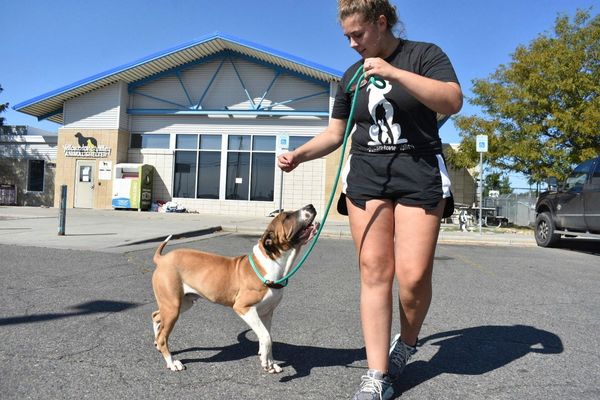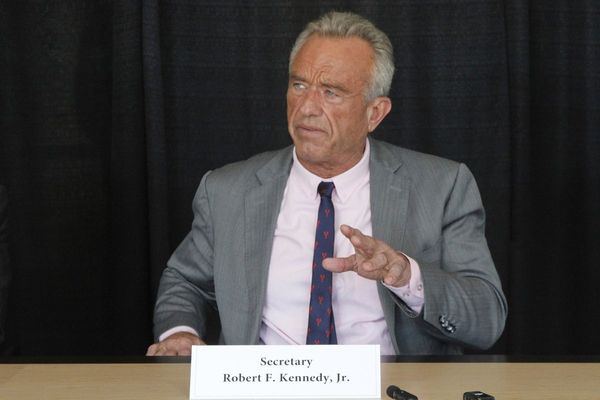
In the opening phase of the race, it was Verstappen who had the edge as, after holding the advantage at the start, he was steadily able to eke out a gap on the medium tyres to be more than six seconds clear up until the first round of stops.
Things did not seem to change much as drivers switched to the hard, as Norris, who briefly lost a bit of time getting past Red Bull’s Sergio Perez, did not seem any better off.
The gap stabilised around that six-second mark, then even briefly drifted out to around seven seconds, with Norris appearing to be the man under threat as Ferrari’s Charles Leclerc closed in on him.
But with around 20 laps to go, it was like a switch flicked over in the race and Norris’s car came alive – slowly and steadily he then began hauling in the Red Bull to set up a thrilling end to the race.
From the outside it seemed as though this was a simple case of Verstappen battling some car problem that handed Norris his opportunity, but the reality was much more nuanced than that.
There were two factors at play here – one is that Verstappen’s tyres had fallen out of their perfect operating window and he was unable to recover them.
And then, on the flipside, Norris’s careful management of the hards in their early life helped bring his alive just when they were needed.
As Verstappen said on his struggles: “It was just like driving on ice, really snappy, and just you can feel when the tyres are not gripping up anymore.”

What proved critical here about how Norris avoided the same fate was in how he managed his tyres in the opening phase of that second stint.
One of the characteristics of modern F1 tyres is that much of their overall behaviour throughout a stint depends entirely on how they are treated when they hit the track for the first time.
Attack them super hard and that can negatively impact their temperature and degradation levels later on – costing a driver performance. Bring them in gently, as Norris did, and then the rewards can be great as they hit a sweet spot of performance.
As McLaren team principal Andrea Stella said: “The main factor was the temperature in which you could get your tyres to operate.
“It looked that if you took your tyres to too high a temperature, then the [performance] drop was quite significant. It wasn't a plateau, but there was a little bit of a cliff and you would lose quite a lot of performance.
"For us, the tyres at the start of the race in the first stint were too hot and we were losing ground to Verstappen.
“But in the second stint, especially Lando, he managed to control the pace while the tyres were newer. And the newer they are, the easier they get hotter in a way. So he was very patient not overcooking it, and this paid off at the end."

Red Bull’s plight was not helped by it having failed to bank any knowledge of how the hards behaved at Imola. It had opted to avoid a long run on the hard on Friday – on a day when it had struggled to pitch its RB20 in the right set-up window.
As Red Bull team boss Christian Horner said: “Probably with hindsight we maybe would’ve been better running a hard long on Friday, just because we opted to take two new hard tyres into the race. Maybe I would’ve been better to get the information on the tyre.”
Norris did know what was needed to get the hards into the right window, but his approach went far beyond just being patient.
It took him a while in the early phase of the second stint to understand what was going on (there was that radio message at one point about others pushing more than him), and how he could address things in a phase of the race when others seemed quicker.
“I wasn't comfortable as soon as I came out on the hard tyre,” said Norris. “I quite quickly asked, like, ‘where am I struggling?’ And they're like, ‘oh, they're just pushing more than you’.
“But I was asking because I just felt slow and I didn't feel like I could push a lot more. So as soon as I started to push, I felt like I, you know, I'd oversteer, I'd understeer, lock tyres. It was just, the tyres were not in a good window.

“And I think it's clear, you know, with Max saying a similar thing, that as soon as they're not in the right window, just you can't push.
“I basically changed all my switches on the steering wheel to try and help the rear tyres and try to kill the fronts, because I just had too much front at that point. And maybe five, 10 laps later, things started to come back to me.
“So making all these changes and changing the differential and the brake balance and all of those things really allowed me to kind of bring the tyres back into a good window. As soon as I got there, I felt confident enough to push. And as soon as I felt like I could push, it kind of spiralled in the right direction.”
Added to Norris’s situation was the team had also anticipated the weather being much cooler than it turned out to be, so his car was not in the perfect window.
“We were expecting it to be a little bit colder today than what it was,” he said. “So we kind of set up the car more for colder conditions rather than hot, and I think I paid the price in general.
“That's why I had to do so much of an introduction to the tyres and kind of bring them up so gently and look after them. Because if I didn't, I just would have fallen off a cliff like the others did.
“My only chance was to drive my race. And that meant being under pressure from Charles for more laps than I would have liked.
“But as soon as I kind of cleared the traffic and got back into my own rhythm, then I felt good with the car. The tyres kind of came back to me and I could push and I was happy.
“From then on, the pace was amazing. And so it's a good sign.”

But while Norris left Imola wondering what might have been if things had worked out differently, it is clear that the race exposed both some strengths and weaknesses that remain in the McLaren package.
“It's always a good thing to have good race pace,” he said. “But clearly when it's hotter and there's more degradation to the rear tyres, we start to struggle a lot more.
“And this is something we know, maybe we could have prepared for a little bit more. But nevertheless, I'm happy with the outcome.”







